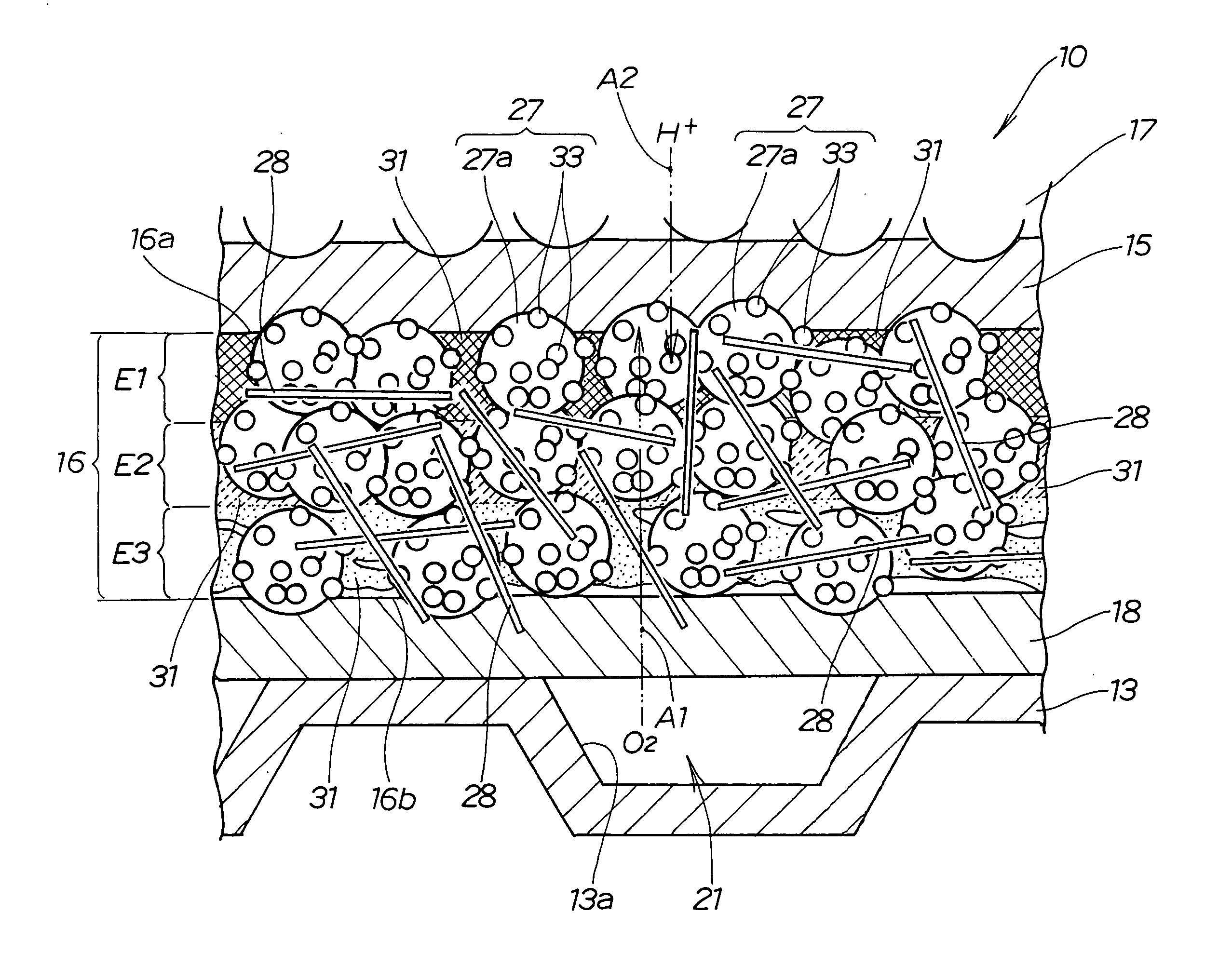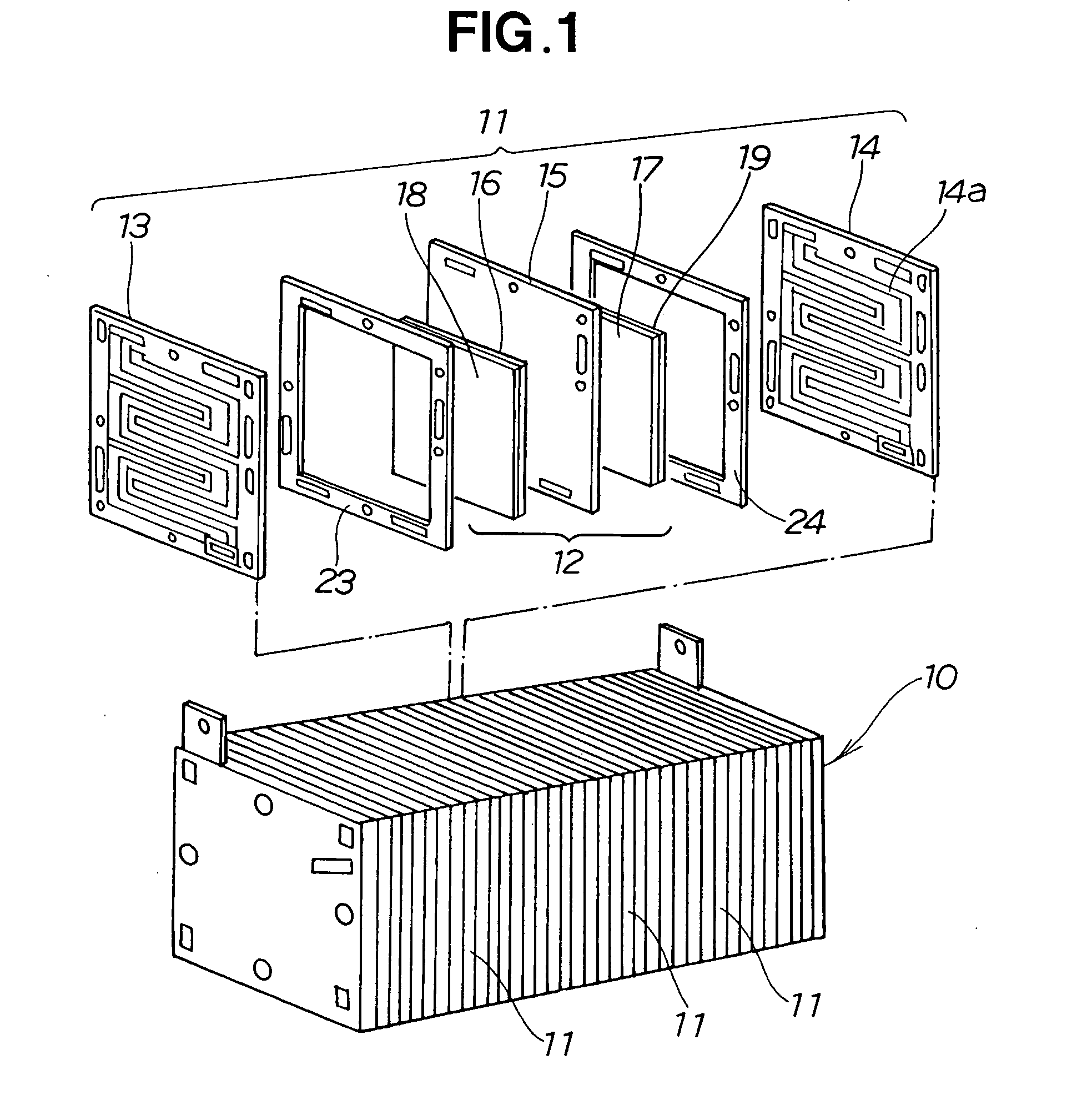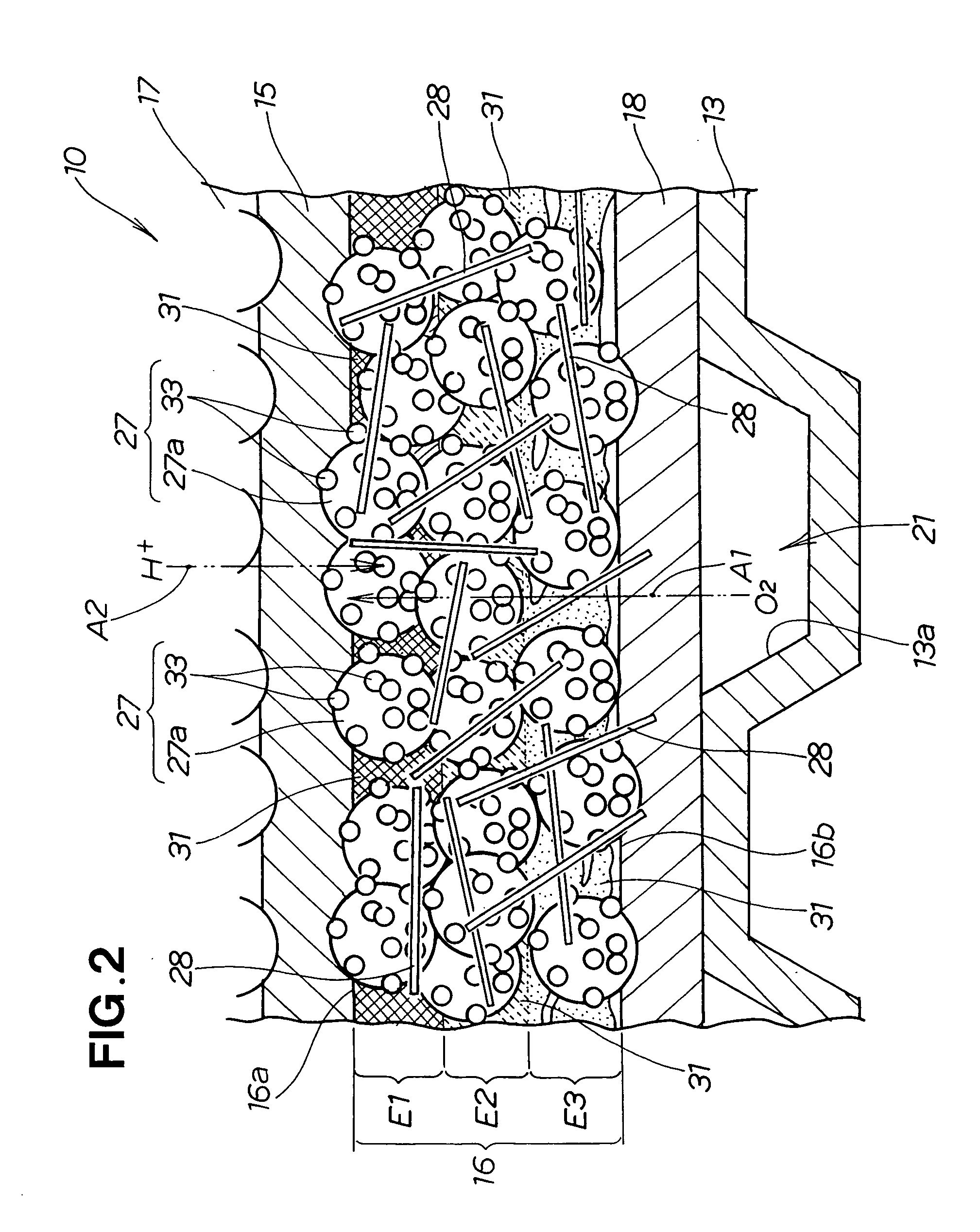Method for manufacturing electrode layer for fuel cell
- Summary
- Abstract
- Description
- Claims
- Application Information
AI Technical Summary
Benefits of technology
Problems solved by technology
Method used
Image
Examples
experiment 1
[0114] carried out first, and the effect of the evaporation time t1 of the solvent 49 was studied. Specifically, in experiment 1, the electrode paste layer 41 was held in the concentration gradient chamber 56 (see FIG. 3). The conditions of experiment 1 are shown in TABLE 1 below.
TABLE 1Concentration adjustment stepSolidifying stepChamberBlowEvaporationInternal oventemperaturevelocitytime t1temperatureDrying timeTe (° C.)Sa (m / s)(min)Th (° C.)t2 (min)230110055103060
[0115] The electrode paste layer 41 was held in the chamber 61 of the concentration gradient chamber 56 for a holding time t1 under experimental conditions that corresponded to a chamber temperature Te of 23° C. while the blowing of air 65 was stopped (blow velocity Sa of air 65: 0 m / s), as shown in TABLE 1. The holding time t1 corresponds to the time t1 in which the solvent 49 is evaporated. Hereinbelow, the holding time t1 will be referred to as “evaporation time t1.” After the evaporation time t1 had elapsed, the elect...
PUM
 Login to View More
Login to View More Abstract
Description
Claims
Application Information
 Login to View More
Login to View More - R&D
- Intellectual Property
- Life Sciences
- Materials
- Tech Scout
- Unparalleled Data Quality
- Higher Quality Content
- 60% Fewer Hallucinations
Browse by: Latest US Patents, China's latest patents, Technical Efficacy Thesaurus, Application Domain, Technology Topic, Popular Technical Reports.
© 2025 PatSnap. All rights reserved.Legal|Privacy policy|Modern Slavery Act Transparency Statement|Sitemap|About US| Contact US: help@patsnap.com



